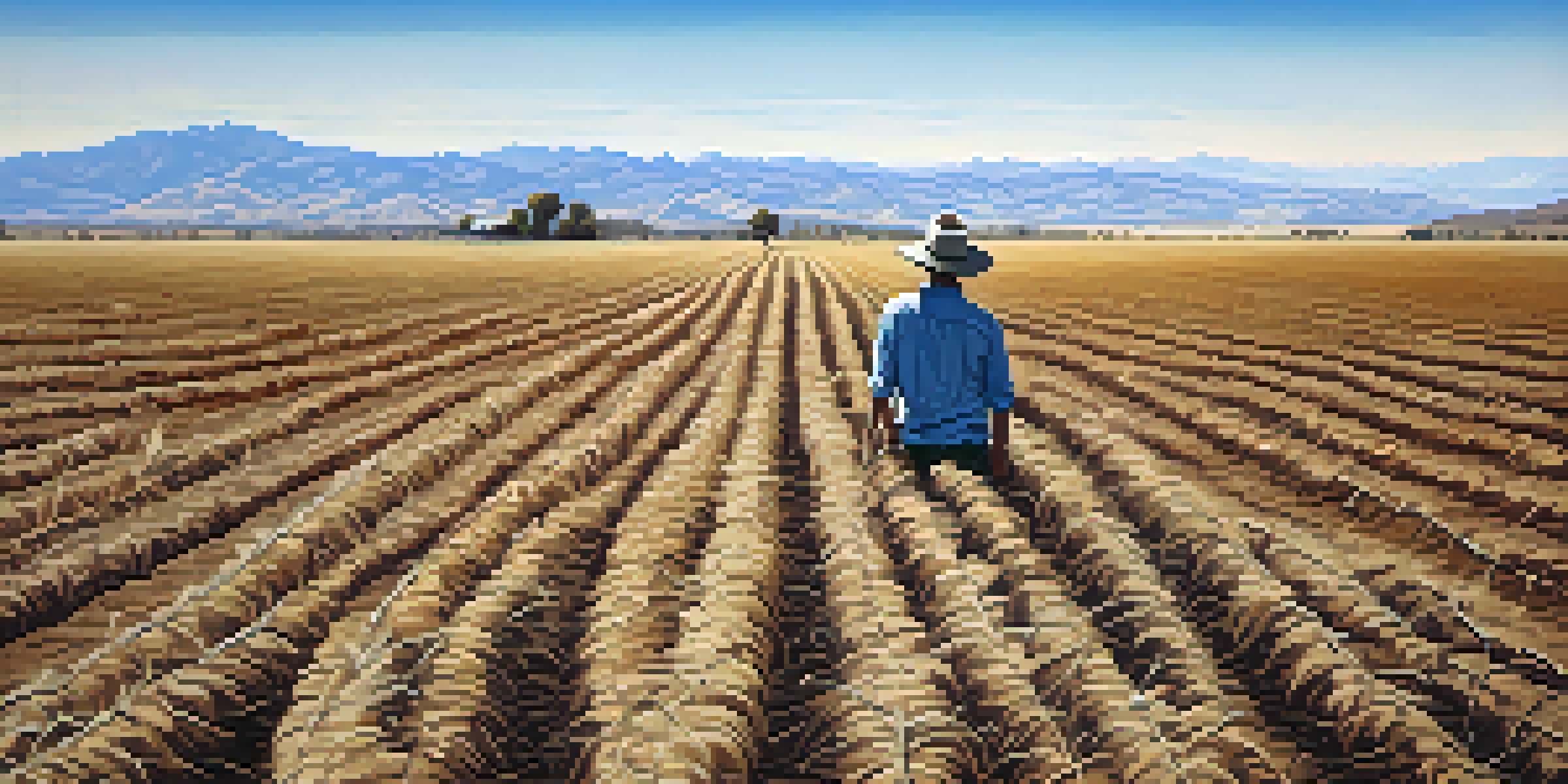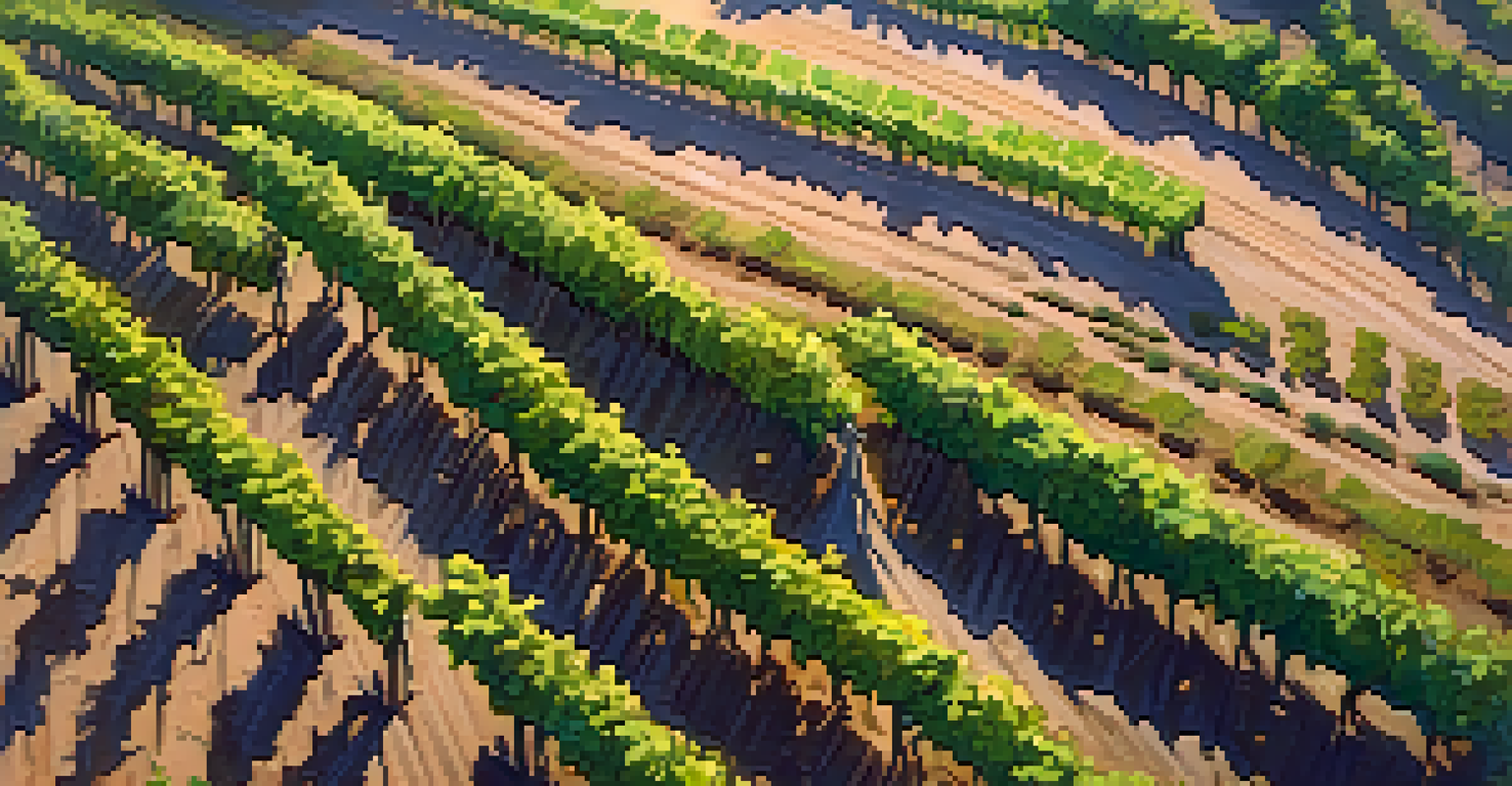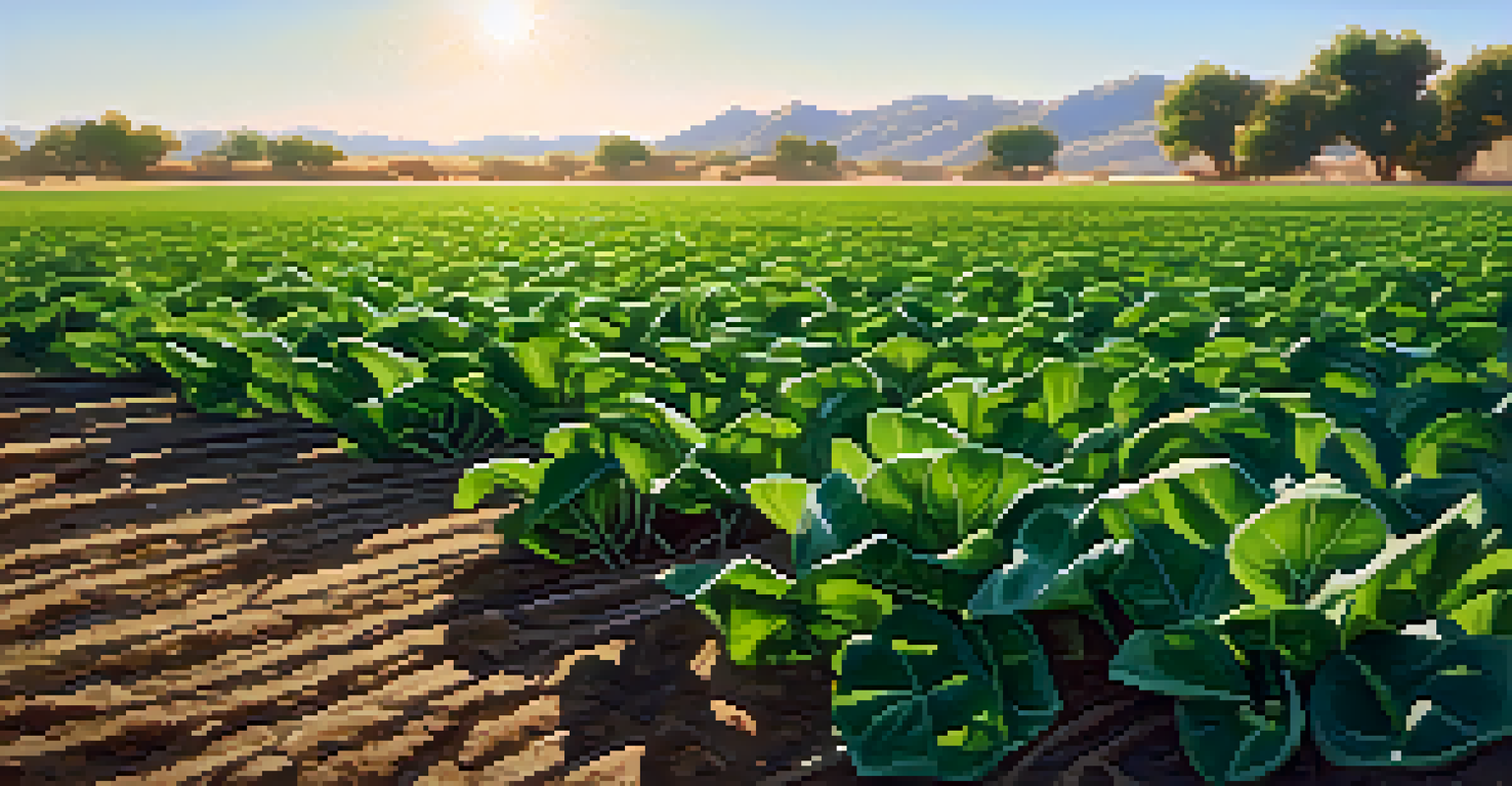Assessing the Effects of Drought on California's Agriculture Sector

Understanding Drought and Its Causes in California
Drought is a prolonged period of abnormally low rainfall, and in California, it’s become an increasingly common phenomenon. Factors such as climate change, water mismanagement, and natural variability in weather patterns contribute to these dry spells. As a state that relies heavily on agriculture, understanding the causes of drought is crucial for farmers and policymakers alike.
In the midst of every crisis, lies great opportunity.
The consequences of drought extend beyond just the weather; they affect water availability, soil health, and crop viability. For instance, reduced snowpack in the Sierra Nevada, which serves as a natural water reservoir, can lead to severe water shortages in the warmer months. This intricate relationship between climate and agriculture underscores the need for effective water management strategies.
By examining the roots of drought, stakeholders can better prepare for its impacts, leading to more resilient agricultural practices. This understanding helps farmers adapt to changing conditions while informing governmental policies aimed at mitigating water scarcity.
Economic Consequences of Drought on Agriculture
The economic impact of drought on California's agriculture sector can be staggering, affecting everything from crop yields to job security. With many farms relying on irrigation, a lack of water can lead to reduced production and significant financial losses. For example, during severe drought years, some farmers may report losses of up to 50% in their crop yields.

These economic challenges don’t just affect farmers; they ripple through the entire supply chain, impacting workers, suppliers, and consumers. When crops fail, it can lead to higher food prices and reduced availability of local produce. This scenario underscores the interconnectedness of agriculture and the broader economy.
Drought's Economic Impact on Farmers
California's agriculture sector faces significant financial losses due to drought, affecting crop yields and job security.
Moreover, the long-term financial health of farms can be jeopardized, leading to increased debt and, in some cases, foreclosure. The economic ramifications emphasize the urgency for innovative solutions to combat drought and support sustainable agricultural practices.
Impact of Drought on Crop Production and Diversity
Drought dramatically affects crop production, leading to a decline in both quantity and quality of yields. California, known for its diverse agricultural output, faces particular challenges as certain crops are more sensitive to water stress. For example, almonds and grapes, which are major cash crops, require substantial amounts of water and can suffer greatly during dry spells.
The greatest threat to our planet is the belief that someone else will save it.
In addition to affecting established crops, drought can limit farmers' ability to diversify their operations. With fewer resources, many may stick to growing only the most resilient crops, reducing overall agricultural diversity. This lack of diversification can make the sector more vulnerable to future shocks, whether they be drought-related or otherwise.
Farmers are increasingly encouraged to adopt drought-resistant crops and sustainable practices, but transitioning takes time and resources. The balance between maintaining profitability and ensuring long-term sustainability is crucial as the state navigates ongoing water challenges.
Effects of Drought on Livestock and Animal Husbandry
Drought doesn’t only impact crops; it also poses significant challenges for livestock and animal husbandry. With reduced forage and water availability, farmers may struggle to meet the nutritional needs of their animals, leading to health issues and decreased productivity. This situation can result in difficult choices, such as selling livestock or reducing herd sizes.
Furthermore, higher feed prices during drought can lead to increased operational costs for farmers. They may find themselves grappling with the financial burden of purchasing feed from distant suppliers, which is not only costly but also less sustainable in the long run. This economic pressure can affect the viability of livestock operations.
Water Management is Crucial
Implementing effective water management strategies, such as drip irrigation and technology use, is essential for sustaining agriculture during drought.
As a response, many farmers are implementing water conservation practices and seeking alternative feed sources. By doing so, they aim to mitigate the impacts of drought and ensure their livestock remain healthy and productive.
Water Management Strategies to Combat Drought Effects
Effective water management is critical for mitigating the effects of drought on California's agriculture sector. Strategies such as drip irrigation and rainwater harvesting can significantly enhance water efficiency on farms. By maximizing every drop, farmers can sustain their crops even during challenging dry periods.
Additionally, the use of technology, such as soil moisture sensors and weather forecasting tools, empowers farmers to make informed decisions about water usage. These innovations help optimize irrigation schedules, ensuring that crops receive the right amount of water when they need it most.
The collaboration between farmers, researchers, and policymakers is essential in developing comprehensive water management plans. By sharing knowledge and resources, the agricultural community can build resilience against future droughts, safeguarding both food production and the environment.
Government Policies Addressing Drought Challenges
Government policies play a vital role in addressing the challenges posed by drought in California's agriculture sector. Programs aimed at water conservation, such as the Sustainable Groundwater Management Act, seek to promote responsible water use and conservation practices among farmers. These initiatives are designed to foster long-term sustainability and protect vital water resources.
In addition to conservation efforts, financial assistance programs can help farmers cope with the economic impacts of drought. Grants and low-interest loans may provide the necessary support for farmers to implement innovative practices or recover from crop losses. Such programs are crucial for maintaining the agricultural economy during difficult times.
Future Adaptation to Drought
As drought conditions worsen, the agricultural sector must embrace innovation and sustainability to thrive amidst climate challenges.
Ultimately, collaborative efforts between government agencies, farmers, and communities are essential in creating effective policies. By working together, stakeholders can build a more resilient agriculture sector that can withstand the challenges of drought while continuing to feed the nation.
Future Outlook: Adapting to Drought Conditions
As climate change continues to alter weather patterns, the frequency and severity of droughts in California are likely to increase. Adapting to these conditions will require a proactive approach from all stakeholders in the agriculture sector. This includes embracing new technologies, diversifying crops, and implementing sustainable practices that prioritize water conservation.
Education and training will also play a crucial role in equipping farmers with the tools they need to navigate changing conditions. Workshops and resources that focus on drought resilience can empower farmers to make informed decisions that benefit both their operations and the environment.

Looking ahead, the agricultural sector must foster a culture of adaptability and innovation. By doing so, it can not only survive but thrive in the face of ongoing drought challenges, ensuring a sustainable future for California's agriculture.